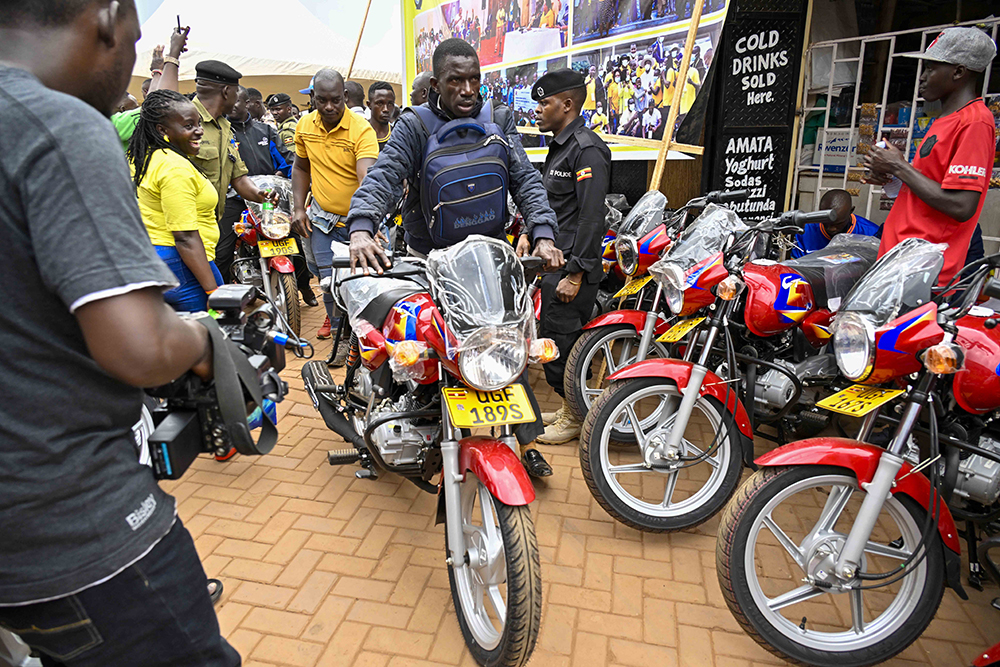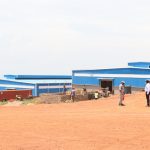(Kampala) – President Yoweri Museveni has fulfilled his pledge of delivering 36 motorcycles to 12 ghetto structures within the Kampala metropolitan area. The motorcycles were officially handed over on September 4, 2024, by State House Comptroller Jane Barekye at a function held at Gaza Tough Empire, a well-known ghetto structure in Bwaise. Each of the SACCOs (Savings and Credit Co-operative Societies) received three motorcycles.
The beneficiaries included SACCOs from various parts of Kampala and its surroundings, such as Kawempe, Makindye, Rubaga, Nakawa, and Mukono. These SACCOs play a crucial role in helping ghetto youth establish income-generating activities and become self-sufficient.
The motorcycles, delivered as part of President Museveni’s wider initiative to support youth enterprises, aim to boost the SACCOs’ productivity by providing boda boda services, a popular form of transportation and business in Uganda. Barekye conveyed the President’s message to the youth, encouraging them to use the motorcycles to enhance their incomes and improve their livelihoods. She urged the ghetto youth to stay disciplined, work hard, and remain patriotic as they continue to benefit from government support.
The pledge for the motorcycles was first made on July 31, 2024, when President Museveni met with leaders of the ghetto SACCOs at State House Entebbe. During that meeting, the President also delivered on his earlier promise of UGX 1.2 billion, with each SACCO receiving UGX 100 million. The funds are intended to help the SACCO members engage in small businesses, such as artisanal work, services like salons, and other income-generating ventures.
Barekye emphasized the importance of transparency in the management of SACCO funds, reminding the leaders that the government would monitor their use to ensure the money is directed toward the intended purpose of lifting members out of poverty. She reiterated that the motorcycles should not remain idle but should be actively used to support the prosperity of the SACCO members.
The Director of Crime Intelligence and coordinator of the ghetto structure project, Brig. Gen. Christopher Ddamulira, expressed his gratitude to President Museveni for recognizing the potential of the ghetto youth and supporting their efforts. He acknowledged that ghetto areas, once associated with criminality, have seen a significant transformation into productive and hardworking communities. Ddamulira praised the SACCO leaders for helping organize the ghetto youth and guiding them toward more positive activities.
He urged the youth to avoid destructive behaviors such as alcoholism, gambling, drug abuse, and prostitution, which hinder their personal and professional growth. Ddamulira also emphasized the need for discipline and a commitment to improving their lives through hard work and responsible citizenship.
The ghetto project has made strides in empowering youth to engage in productive activities, with some SACCOs already seeing the positive impact of the financial support they received in July. The national chairperson of the ghetto structures, Kalyango Shafik, reported that the UGX 1.2 billion delivered by the President is being utilized effectively, and the SACCO members are accessing it to grow their businesses. He expressed gratitude for the motorcycles, describing them as a valuable tool for enhancing the SACCOs’ income.
Kalyango commended President Museveni for his understanding of the challenges faced by the ghetto youth and for providing them with the opportunity to be part of national development efforts. He noted that the support given to the ghetto youth has proved their capacity as organized and capable citizens, capable of contributing to the economy. He further thanked Brig. Gen. Ddamulira and Maj. Emmanuel Kuteesa, another coordinator of the ghetto structure project, for their efforts in mobilizing the youth and helping them transition from criminal activities to productive enterprises.
He said the government will continue to work closely with the ghetto SACCOs to ensure that the youth receive the necessary support to thrive and added that efforts are also underway to help the ghetto youth acquire national identification cards, enabling them to open bank accounts and access financial services more easily. He concluded by stating that this initiative is part of a broader plan to formalize their business activities and integrate them into Uganda’s growing economy.
The following table provides an overview of the key elements of President Museveni’s support to the ghetto SACCOs:
| Support Initiative | Details |
|---|---|
| Motorcycles Delivered | 36 motorcycles (3 per SACCO) |
| Financial Support | UGX 1.2 billion (UGX 100 million per SACCO) |
| Target Beneficiaries | 12 ghetto SACCOs in Kampala metropolitan area |
| Purpose | Enhance income-generating activities |
| Additional Initiatives | Efforts to help ghetto youth acquire national IDs |




















